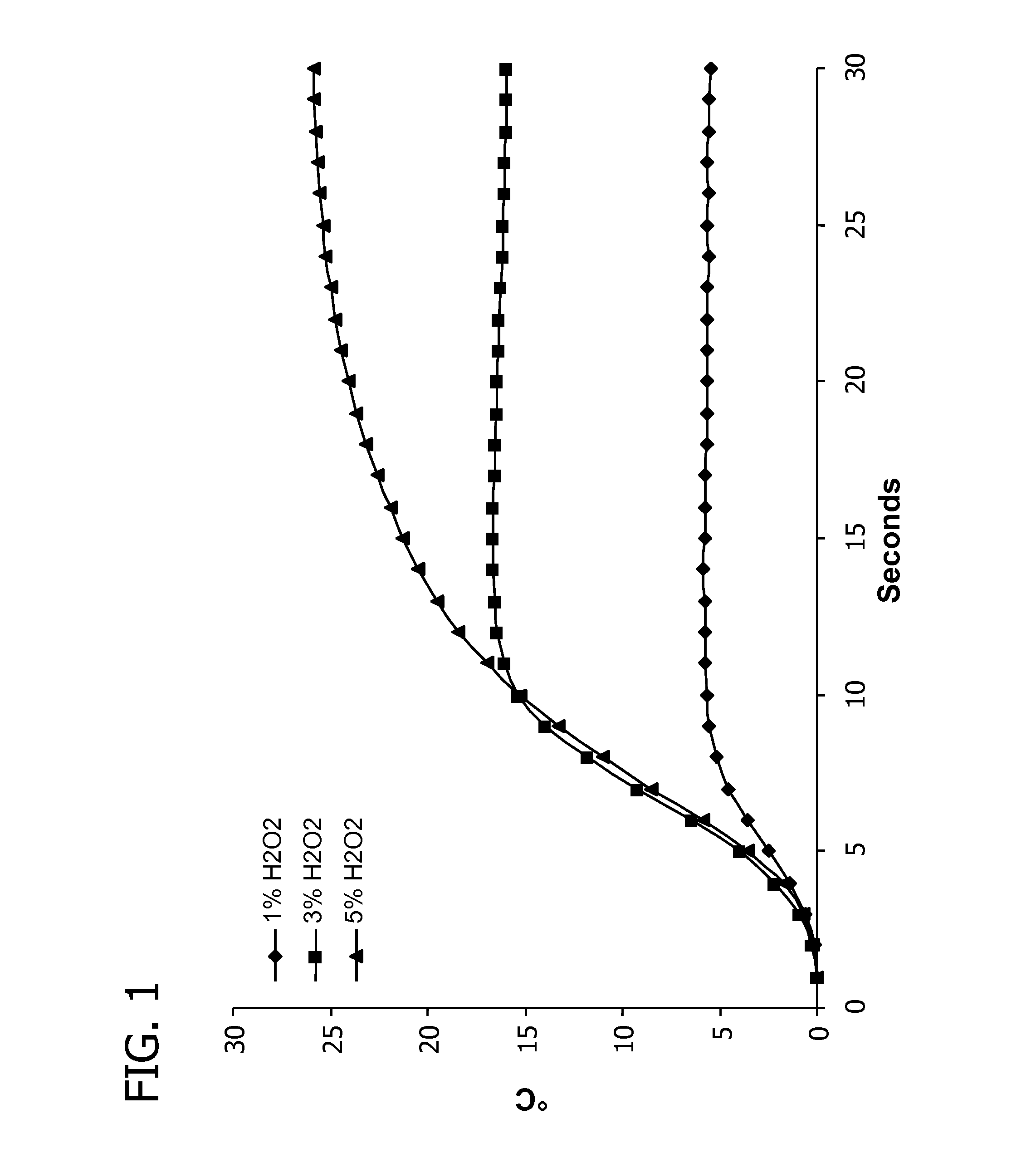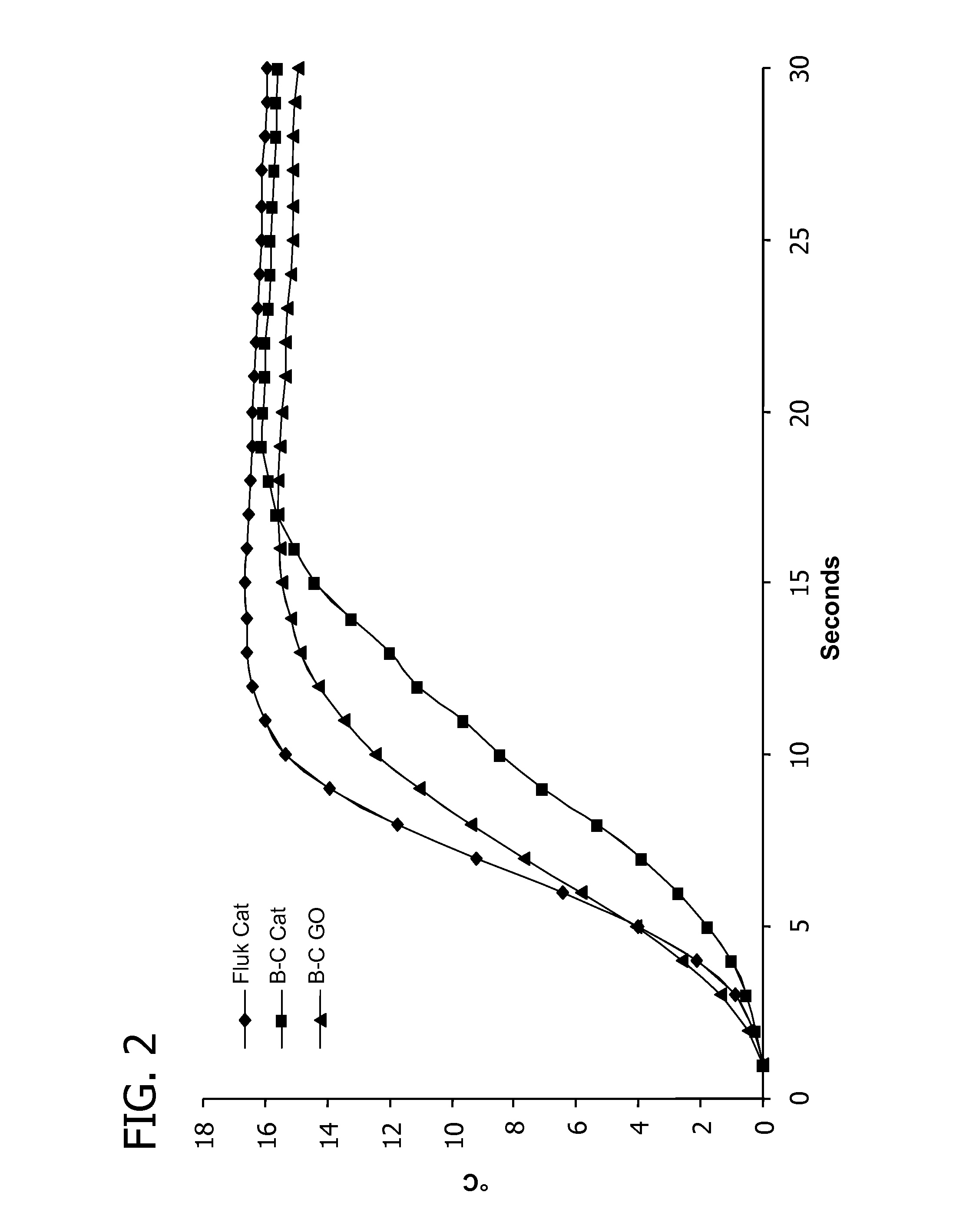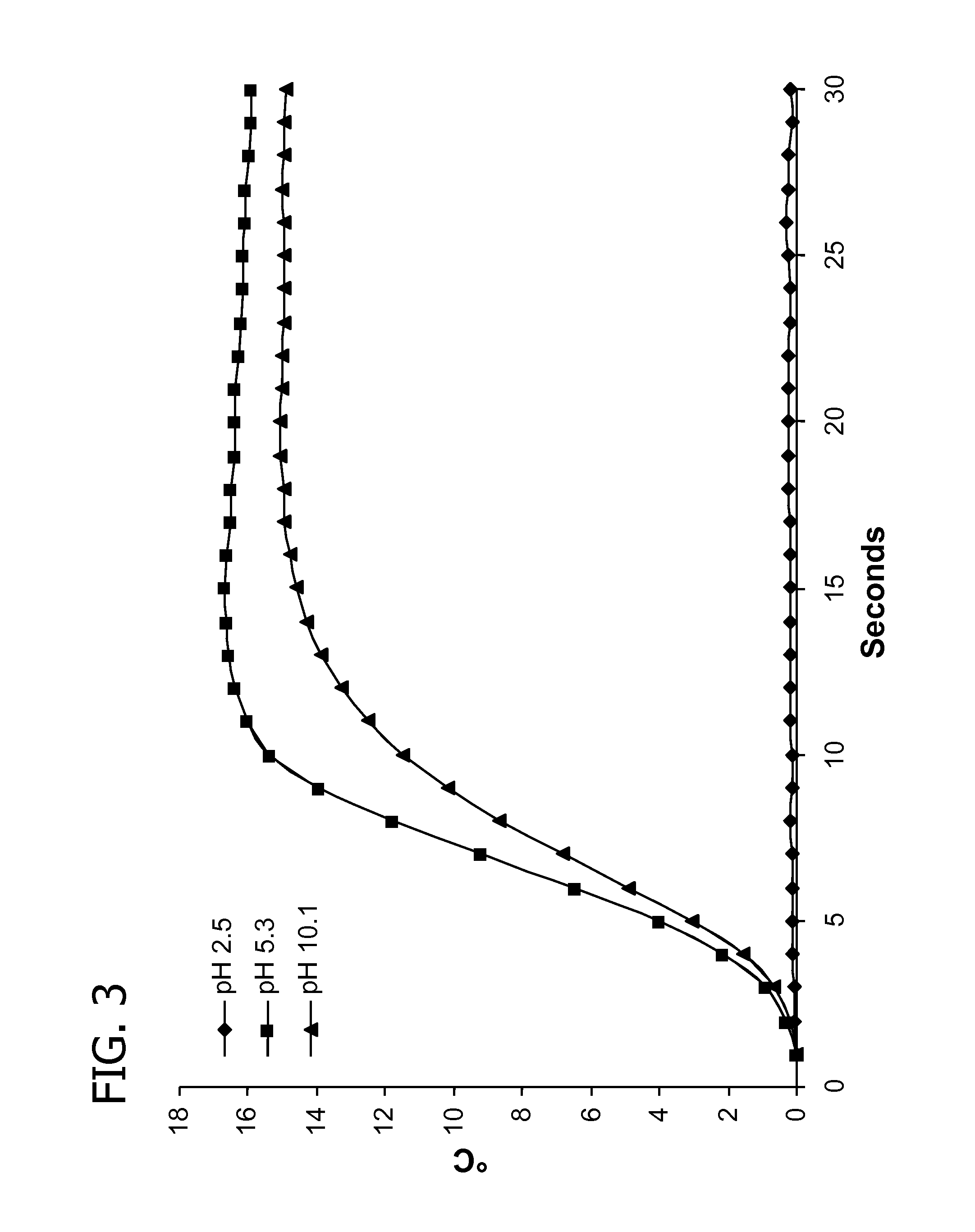Reactive Chemistries For Warming Personal Care Products
- Summary
- Abstract
- Description
- Claims
- Application Information
AI Technical Summary
Benefits of technology
Problems solved by technology
Method used
Image
Examples
example 1
[0202]In this example, samples were prepared by contacting various concentrations of hydrogen peroxide with solutions containing catalase enzyme to evaluate their ability to generate heat.
[0203]To begin, 10 grams of 1% hydrogen peroxide solution, having a pH of 5.3, was poured into a beaker containing a magnetic stir bar (8 mm×14 mm). The magnetic stirrer was set at 50% of full speed. While stirring the hydrogen peroxide solution, 200 milligrams of a solution containing 20% (by weight) Fluka 60634 catalase solution from micrococcus lysodeikticus (commercially available from Sigma-Aldrich, St. Louis, Mo.) and 80% (by weight) water was added dropwise to the beaker. The temperature change of the sample within the beaker was recorded for 30 seconds using a thermocouple that was placed into the beaker.
[0204]Two additional samples were prepared and evaluated using the same method as described above with the exception that one sample used 3% hydrogen peroxide solution with the catalase sol...
example 2
[0206]In this example, samples were prepared by contacting solutions of 3% hydrogen peroxide with solutions containing various enzymes to evaluate their ability to generate heat.
[0207]The first sample (Fluk Cat) was the 3% hydrogen peroxide sample prepared in Example 1.
[0208]The second sample (B-C Cat) was prepared using the method for the 3% hydrogen peroxide sample of Example 1 with the exception of using 28 milligrams of Bio-Cat catalase powder from aspergillus niger (lot number CAT075B-UP07, available from Bio-Cat Inc., Troy, Va.) in place of Fluka 60634 catalase solution.
[0209]A third sample (B-C GO) was prepared using the method for the 3% hydrogen peroxide sample of Example 1 with the exception of using 14 milligrams of Bio-Cat glucose oxide powder from aspergillus niger (lot number G015-UP07, available from Bio-Cat Inc., Troy, Va.) in place of Fluka 60634 catalase solution.
[0210]The temperature changes of the second and third samples were evaluated and the results of these e...
example 3
[0212]In this example, samples were prepared by contacting solutions of 3% hydrogen peroxide with solutions containing catalase enzymes. The pH values of the samples were varied to evaluate their ability to generate heat under various pH conditions.
[0213]The first sample (pH 5.3) was the 3% hydrogen peroxide sample produced in Example 1.
[0214]The second sample (pH 10.1) was prepared using the method for the 3% hydrogen peroxide sample of Example 1 with the exception of raising the pH of the hydrogen peroxide solution to 10.1 using a 45% solution of potassium hydroxide prior to adding the diluted Fluka catalase solution to the beaker.
[0215]A third sample (pH 2.5) was prepared using the method for the 3% hydrogen peroxide sample of Example 1 with the exception of lowering the pH of the hydrogen peroxide solution to 2.5 using a 50% solution of malic acid prior to adding the diluted Fluka catalase solution to the beaker.
[0216]The temperature changes of the second and third samples were ...
PUM
| Property | Measurement | Unit |
|---|---|---|
| Temperature | aaaaa | aaaaa |
| Fraction | aaaaa | aaaaa |
| Fraction | aaaaa | aaaaa |
Abstract
Description
Claims
Application Information
 Login to View More
Login to View More - R&D
- Intellectual Property
- Life Sciences
- Materials
- Tech Scout
- Unparalleled Data Quality
- Higher Quality Content
- 60% Fewer Hallucinations
Browse by: Latest US Patents, China's latest patents, Technical Efficacy Thesaurus, Application Domain, Technology Topic, Popular Technical Reports.
© 2025 PatSnap. All rights reserved.Legal|Privacy policy|Modern Slavery Act Transparency Statement|Sitemap|About US| Contact US: help@patsnap.com



